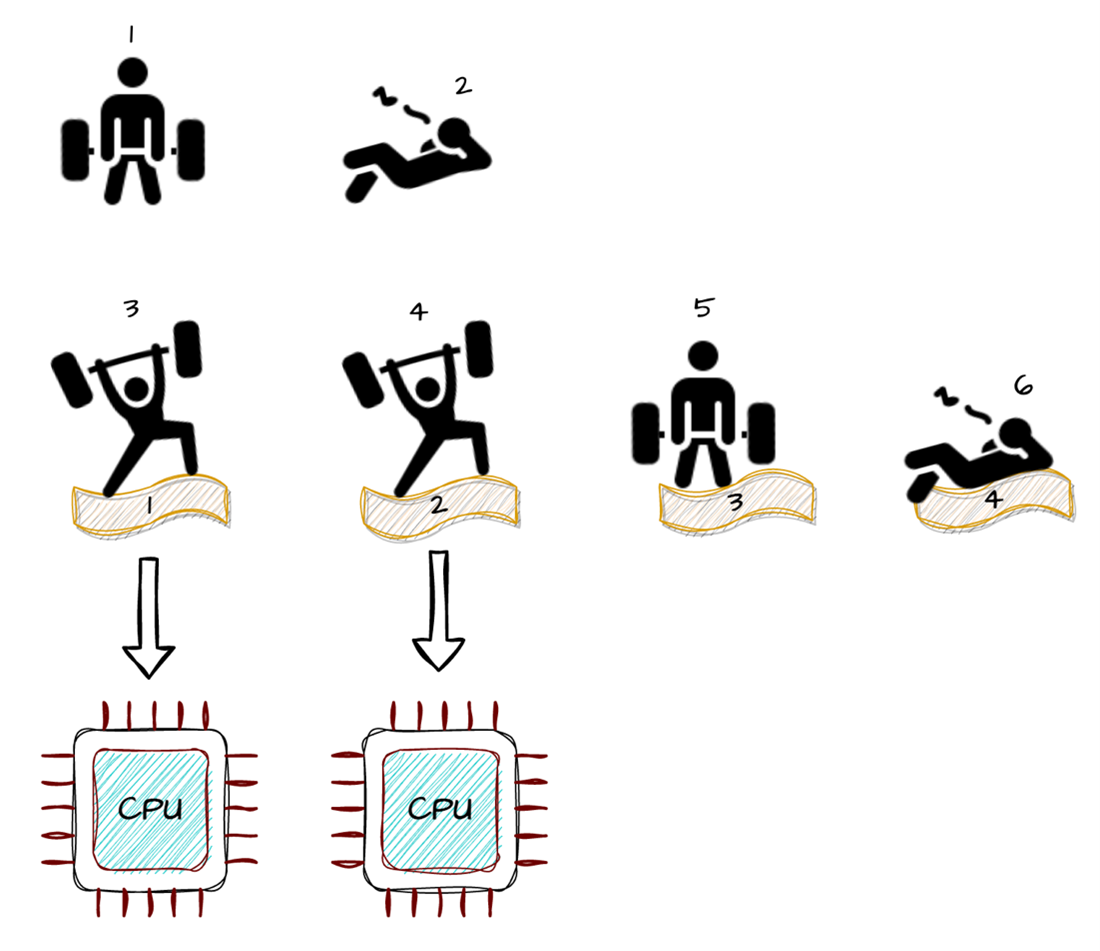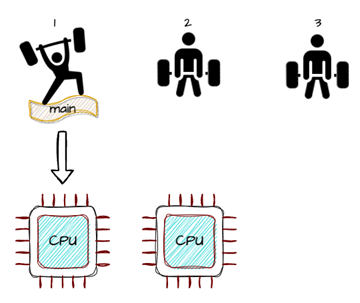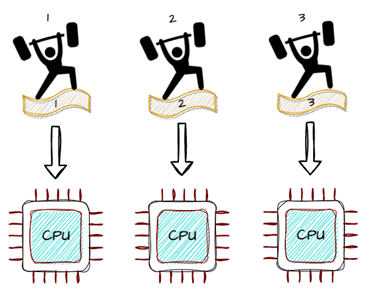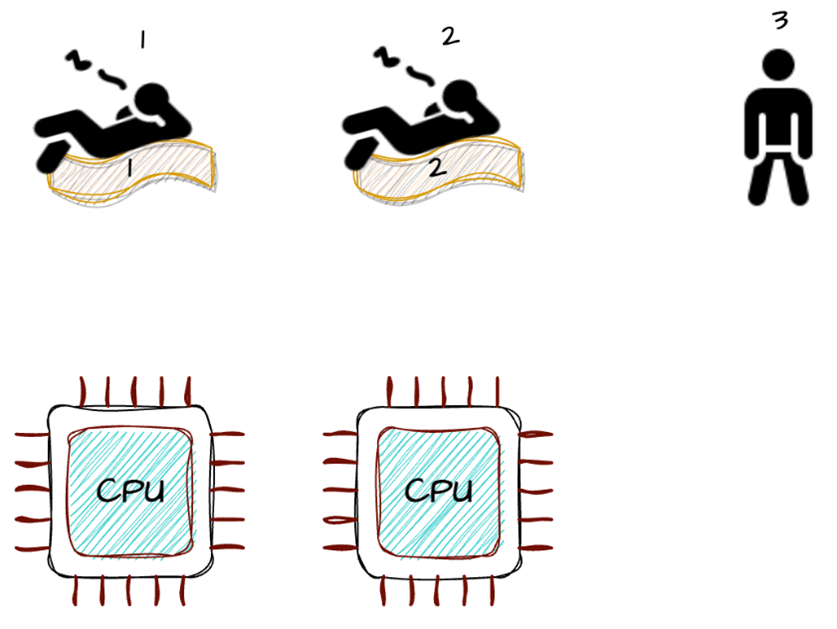Coroutines are a fantastic manner of writing asynchronous, non-blocking code in Kotlin. Bring to mind them as light-weight threads, as a result of thatâs precisely what they’re. Light-weight threads purpose to cut back context switching, a quite dear operation. Additionally, you’ll be able to simply droop and cancel them anytime. Sounds nice, proper?
After understanding all of the advantages of coroutines, you made a decision to provide it a take a look at. You wrote your first coroutine and known as it from a non-suspendible, common serve as… best to determine that your code does no longer assemble! You are actually on the lookout for a approach to name your coroutine, however there aren’t any transparent explanations about how to do this. It sort of feels such as you aren’t by myself on this quest: This developer were given so pissed off that heâs given up on Kotlin altogether!
Does this sound acquainted to you? Or are you continue to searching for the most efficient tactics to hyperlink coroutines for your non-coroutine code? If that is so, then this weblog submit is for you. On this article, we will be able to proportion essentially the most basic coroutine gotcha that every one folks stumbled upon all the way through our coroutines adventure: Find out how to name coroutines from common, blocking off code?
Weâll display 3 other ways of bridging the distance between the coroutine and non-coroutine global:
- GlobalScope (higher no longer)
- runBlocking (watch out)
- Droop all of the manner (move forward)
Ahead of we dive into those strategies, we will introduce you to a few ideas to help you perceive the other ways.
Postponing, blocking off and non-blocking
Coroutines run on threads and threads run on a CPU . To raised perceive our examples, it is useful to visualise which coroutine runs on which thread and which CPU that thread runs on. So, we will proportion our psychological image with you within the hopes that it is going to additionally assist you to perceive the examples higher.
As we discussed sooner than, a thread runs on a CPU. Let’s get started through visualizing that courting. Within the following image, we will see that thread 2 runs on CPU 2, whilst thread 1 is idle (and so is the primary CPU):

Put merely, a coroutine may also be in 3 states, it may well both be:
1. Doing a little paintings on a CPU (i.e., executing some code)
2. Looking ahead to a thread or CPU to perform a little paintings on
3. Looking ahead to some IO operation (e.g., a community name)
Those 3 states are depicted underneath:

Recall {that a} coroutine runs on a thread. One essential factor to notice is that we will have extra threads than CPUs and extra coroutines than threads. That is totally commonplace as a result of switching between coroutines is extra light-weight than switching between threads. So, let’s believe a state of affairs the place now we have two CPUs, 4 threads, and 6 coroutines. On this case, the next image presentations the imaginable situations which can be related to this weblog submit.

At the start, coroutines 1 and 5 are ready to get some paintings carried out. Coroutine 1 is ready as it does no longer have a thread to run on whilst thread 5 does have a thread however is looking forward to a CPU. Secondly, coroutines 3 and four are running, as they’re working on a thread thatâs burning CPU cycles. Finally, coroutines 2 and six are looking forward to some IO operation to complete. Then again, not like coroutine 2, coroutine 6 is occupying a thread whilst ready.
With this knowledge we will in spite of everything give an explanation for the remaining two ideas you want to find out about: 1) coroutine suspension and a pair of) blocking off as opposed to non-blocking (or asynchronous) IO.
Postponing a coroutine implies that the coroutine offers up its thread, permitting every other coroutine to make use of it. As an example, coroutine 4 may just hand again its thread in order that every other coroutine, like coroutine 5, can use it. The coroutine scheduler in the long run makes a decision which coroutine can move subsequent.
We are saying an IO operation is obstructing when a coroutine sits on its thread, looking forward to the operation to complete. That is exactly what coroutine 6 is doing. Coroutine 6 did not droop, and no different coroutine can use its thread as a result of it is blocking off.
On this weblog submit, weâll use the next easy serve as that makes use of sleep to mimic each a blocking off and a CPU in depth job. This works as a result of sleep has the unusual characteristic of blocking off the thread it runs on, retaining the underlying thread busy.
non-public amusing blockingTask(job: String, period: Lengthy) {
println("Began $tasktask on ${Thread.currentThread().title}")
sleep(period)
println("Ended $tasktask on ${Thread.currentThread().title}")
}Coroutine 2, on the other hand, is extra courteous â it suspended and we could every other coroutine use its thread whilst its looking forward to the IO operation to complete. Itâs appearing asynchronous IO.
In what follows, weâll use a serve as asyncTask to simulate a non-blocking job. It seems to be similar to our blockingTask, however the one distinction is that as a substitute of sleep we use lengthen. Versus sleep, lengthen is a postponing serve as â it is going to hand again its thread whilst ready.
non-public droop amusing asyncTask(job: String, period: Lengthy) {
println("Began $job name on ${Thread.currentThread().title}")
lengthen(period)
println("Ended $job name on ${Thread.currentThread().title}")
}Now now we have defined all of the ideas in position, itâs time to have a look at 3 other ways to name your coroutines.
Possibility 1: GlobalScope (higher no longer)
Think now we have a suspendible serve as that should name our blockingTask thrice. We will be able to release a coroutine for each and every name, and each and every coroutine can run on any to be had thread:
non-public droop amusing blockingWork() {
coroutineScope {
release {
blockingTask("heavy", 1000)
}
release {
blockingTask("medium", 500)
}
release {
blockingTask("gentle", 100)
}
}
}
Take into consideration this program for some time: How a lot time do you are expecting it is going to wish to end for the reason that now we have sufficient CPUs to run 3 threads on the identical time? After which there’s the large query: How are you going to name blockingWork suspendible serve as out of your common, non-suspendible code?
One imaginable manner is to name your coroutine in GlobalScope which isn’t certain to any activity. Then again, the usage of GlobalScope should be have shyed away from as it’s obviously documented as no longer secure to make use of (instead of in restricted use-cases). It will possibly motive reminiscence leaks, it’s not certain to the primary of structured concurrency, and it’s marked as @DelicateCoroutinesApi. However why? Neatly, run it like this and spot what occurs.
non-public amusing runBlockingOnGlobalScope() {
GlobalScope.release {
blockingWork()
}
}
amusing major() {
val durationMillis = measureTimeMillis {
runBlockingOnGlobalScope()
}
println("Took: ${durationMillis}ms")
}Output:
Took: 83ms
Wow, that used to be fast! However the place did the ones print statements within our blockingTask move? We best see how lengthy it took to name the serve as blockingWork, which additionally appears to be too brief â it must take no less than a 2d to complete, donât you compromise? This is without doubt one of the glaring issues of GlobalScope; itâs hearth and omit. This additionally implies that whilst you cancel your major calling serve as all of the coroutines that had been precipitated through it is going to proceed working someplace within the background. Say hi to reminiscence leaks!
Shall we, in fact, use activity.sign up for() to watch for the coroutine to complete. Then again, the sign up for serve as can best be known as from a coroutine context. Beneath, you’ll be able to see an instance of that. As you’ll be able to see, the entire serve as continues to be a suspendible serve as. So, weâre again to sq. one.
non-public droop amusing runBlockingOnGlobalScope() {
val activity = GlobalScope.release {
blockingWork()
}
activity.sign up for() //can best be known as inside of coroutine context
}In a different way to peer the output could be to attend after calling GlobalScope.release. Letâs watch for two seconds and spot if we will get the right kind output:
non-public amusing runBlockingOnGlobalScope() {
GlobalScope.release {
blockingWork()
}
sleep(2000)
}
amusing major() {
val durationMillis = measureTimeMillis {
runBlockingOnGlobalScope()
}
println("Took: ${durationMillis}ms")
}Output:
Began gentle job on DefaultDispatcher-worker-4
Began heavy job on DefaultDispatcher-worker-2
Began medium job on DefaultDispatcher-worker-3
Ended gentle job on DefaultDispatcher-worker-4
Ended medium job on DefaultDispatcher-worker-3
Ended heavy job on DefaultDispatcher-worker-2
Took: 2092ms
The output appears to be right kind now, however we blocked our major serve as for 2 seconds to make certain the paintings is completed. However what if the paintings takes longer than that? What if we donât understand how lengthy the paintings will take? No longer an excessively sensible resolution, do you compromise?
Conclusion: Higher no longer use GlobalScope to bridge the distance between your coroutine and non-coroutine code. It blocks the principle thread and would possibly motive reminiscence leaks.
Possibility 2a: runBlocking for blocking off paintings (watch out)
The second one approach to bridge the distance between the coroutine and non-coroutine global is to make use of the runBlocking coroutine builder. In truth, we see this getting used in every single place. Then again, the documentation warns us about two issues that may be simply lost sight of, runBlocking:
- blocks the thread that it is known as from
- must no longer be known as from a coroutine
Itâs specific sufficient that we must watch out with this runBlocking factor. To be fair, after we learn the documentation, we struggled to realize find out how to use runBlocking correctly. If you are feeling the similar, it can be useful to check the next examples that illustrate how simple it’s to accidentally degrade your coroutine efficiency or even block your program totally.
Clogging your program with runBlocking
Letâs get started with this case the place we use runBlocking at the top-level of our program:
non-public amusing runBlocking() {
runBlocking {
println("Began runBlocking on ${Thread.currentThread().title}")
blockingWork()
}
}
amusing major() {
val durationMillis = measureTimeMillis {
runBlocking()
}
println("Took: ${durationMillis}ms")
}Output:
Began runBlocking on major
Began heavy job on major
Ended heavy job on major
Began medium job on major
Ended medium job on major
Began gentle job on major
Ended gentle job on major
Took: 1807ms
As you’ll be able to see, the entire program took 1800ms to finish. Thatâs longer than the second one we anticipated it to take. It is because all our coroutines ran at the major thread and blocked the principle thread for the entire time! In an image, this example would appear to be this:

Should you best have one thread, just one coroutine can do its paintings in this thread and all of the different coroutines will merely have to attend. So, all jobs watch for each and every different to complete, as a result of they’re all blocking off calls looking forward to this one thread to turn out to be loose. See that CPU being unused there? One of these waste.
Unclogging runBlocking with a dispatcher
To dump the paintings to other threads, you want to use Dispatchers. That you must name runBlocking with Dispatchers.Default to get the assistance of parallelism. This dispatcher makes use of a thread pool that has many threads as your systemâs selection of CPU cores (with no less than two). We used Dispatchers.Default for the sake of the instance, for blocking off operations it’s endorsed to make use of Dispatchers.IO.
non-public amusing runBlockingOnDispatchersDefault() {
runBlocking(Dispatchers.Default) {
println("Began runBlocking on ${Thread.currentThread().title}")
blockingWork()
}
}
amusing major() {
val durationMillis = measureTimeMillis {
runBlockingOnDispatchersDefault()
}
println("Took: ${durationMillis}ms")
}Output:
Began runBlocking on DefaultDispatcher-worker-1
Began heavy job on DefaultDispatcher-worker-2
Began medium job on DefaultDispatcher-worker-3
Began gentle job on DefaultDispatcher-worker-4
Ended gentle job on DefaultDispatcher-worker-4
Ended medium job on DefaultDispatcher-worker-3
Ended heavy job on DefaultDispatcher-worker-2
Took: 1151ms
You’ll be able to see that our blocking off calls are actually dispatched to other threads and working in parallel. If now we have 3 CPUs (our system has), this example will glance as follows:

Recall that the duties listed here are CPU in depth, which means that they’re going to stay the thread they run on busy. So, we controlled to make a blocking off operation in a coroutine and known as that coroutine from our common serve as. We used dispatchers to get the good thing about parallelism. All excellent.
However what about non-blocking, suspendible calls that we have got discussed to start with? What are we able to do about them? Learn on to determine.
Possibility 2b: runBlocking for non-blocking paintings (be very cautious)
Needless to say we used sleep to imitate blocking off duties. On this phase we use the postponing lengthen serve as to simulate non-blocking paintings. It does no longer block the thread it runs on and when it’s idly ready, it releases the thread. It will possibly proceed working on a distinct thread when itâs carried out ready and able to paintings. Beneath is a straightforward asynchronous name this is carried out through calling lengthen:
non-public droop amusing asyncTask(job: String, period: Lengthy) {
println(âBegan $job name on ${Thread.currentThread().title}â)
lengthen(period)
println(âEnded $job name on ${Thread.currentThread().title}â)
}The output of the examples that practice would possibly range relying on what number of underlying threads and CPUs are to be had for the coroutines to run on. To verify this code behaves the similar on each and every system, we will be able to create our personal context with a dispatcher that has best two threads. This fashion we simulate working our code on two CPUs even supposing your system has greater than that:
non-public val context = Executors.newFixedThreadPool(2).asCoroutineDispatcher()Letâs release a few coroutines calling this job. We predict that each and every time the duty waits, it releases the underlying thread, and every other job can take the to be had thread to perform a little paintings. Subsequently, even supposing the underneath instance delays for a complete of 3 seconds, we think it to take just a bit longer than one 2d.
non-public droop amusing asyncWork() {
coroutineScope {
release {
asyncTask("gradual", 1000)
}
release {
asyncTask("every other gradual", 1000)
}
release {
asyncTask("but every other gradual", 1000)
}
}
}To name asyncWork from our non-coroutine code, we use asyncWork once more, however this time we use the context that we created above to make the most of multi-threading:
amusing major() {
val durationMillis = measureTimeMillis {
runBlocking(context) {
asyncWork()
}
}
println("Took: ${durationMillis}ms")
}Output:
Began gradual name on pool-1-thread-2
Began every other gradual name on pool-1-thread-1
Began but every other gradual name on pool-1-thread-1
Ended every other gradual name on pool-1-thread-1
Ended gradual name on pool-1-thread-2
Ended but every other gradual name on pool-1-thread-1
Took: 1132ms
Wow, in spite of everything a pleasant outcome! We have now known as our asyncTask from a non-coroutine code, made use of the threads economically through the usage of a dispatcher and we blocked the principle thread for the least period of time. If we take an image precisely on the time all 3 coroutines are looking forward to the asynchronous name to finish, we see this:

Practice that each threads are actually loose for different coroutines to make use of, whilst our 3 async coroutines are ready.
Then again, it must be famous that the thread calling the coroutine continues to be blocked. So, you want to watch out the place to make use of it. It’s excellent apply to name runBlocking best on the top-level of your software â from the principle serve as or for your exams . What may just occur if you wouldn’t do this? Learn on to determine.
Turning non-blocking calls into blocking off calls with runBlocking
Suppose you’ve got written some coroutines and also you name them for your common code through the usage of runBlocking similar to we did sooner than. After some time your colleagues made up our minds so as to add a brand new coroutine name someplace for your code base. They invoked their asyncTask the usage of runblocking and made an async name in a non-coroutine serve as notSoAsyncTask. Suppose your present asyncWork serve as wishes to name this notSoAsyncTask:
non-public amusing notSoAsyncTask(job: String, period: Lengthy) = runBlocking {
asyncTask(job, period)
}
non-public droop amusing asyncWork() {
coroutineScope {
release {
notSoAsyncTask("gradual", 1000)
}
release {
notSoAsyncTask("every other gradual", 1000)
}
release {
notSoAsyncTask("but every other gradual", 1000)
}
}
}The major serve as nonetheless runs at the identical context you created sooner than. If we now name the asyncWork serve as, we will be able to see other effects than our first instance:
amusing major() {
val durationMillis = measureTimeMillis {
runBlocking(context) {
asyncWork()
}
}
println("Took: ${durationMillis}ms")
}Output:
Began every other gradual name on pool-1-thread-1
Began gradual name on pool-1-thread-2
Ended every other gradual name on pool-1-thread-1
Ended gradual name on pool-1-thread-2
Began but every other gradual name on pool-1-thread-1
Ended but every other gradual name on pool-1-thread-1
Took: 2080ms
You could no longer even understand the issue instantly as a result of as a substitute of running for 3 seconds, the code works for 2 seconds, and this would possibly even look like a win in the beginning look. As you’ll be able to see, our coroutines didn’t do such a lot of an async paintings, didn’t make use in their suspension issues and simply labored in parallel up to they may. Since there are best two threads, one in every of our 3 coroutines waited for the preliminary two coroutines that have been striking on their threads doing not anything, as illustrated through this determine:

It is a serious problem as a result of our code misplaced the suspension capability through calling runBlocking in runBlocking.
Should you experiment with the code we introduced above, you are going to uncover that you just lose all of the structural concurrency advantages of coroutines. Cancellations and exceptions from youngsters coroutines might be unnoticed and receivedât be treated as it should be.
Blocking off your software with runBlocking
Are we able to even do worse? We certain can! In truth, it’s simple to damage all your software with out understanding. Suppose your colleague discovered it’s excellent apply to make use of a dispatcher and made up our minds to make use of the similar context you’ve got created sooner than. That doesnât sound so unhealthy, does it? However take a more in-depth glance:
non-public amusing blockingAsyncTask(job: String, period: Lengthy) =
runBlocking(context) {
asyncTask(job, period)
}
non-public droop amusing asyncWork() {
coroutineScope {
release {
blockingAsyncTask("gradual", 1000)
}
release {
blockingAsyncTask("every other gradual", 1000)
}
release {
blockingAsyncTask("but every other gradual", 1000)
}
}
}
Appearing the similar operation as the former instance however the usage of the context you’ve got created sooner than. Seems risk free sufficient, why no longer give it a take a look at?
amusing major() {
val durationMillis = measureTimeMillis {
runBlocking(context) {
asyncWork()
}
}
println("Took: ${durationMillis}ms")
}
Output:
Began gradual name on pool-1-thread-1
Aha, gotcha! It sort of feels like your colleagues created a impasse with out even realising. Now your major thread is blocked and looking forward to any of the coroutines to complete, but none of them can get a thread to paintings on.
Conclusion: Watch out when the usage of runBlocking, when you use it wrongly it may well block all your software. Should you nonetheless make a decision to make use of it, then make sure to name it out of your major serve as (or for your exams) and all the time supply a dispatcher to run on.
Possibility 3: Droop all of the manner (move forward)
You might be nonetheless right here, so that you didnât flip your again on Kotlin coroutines but? Excellent. We’re right here for the remaining and the most suitable choice that we expect there’s: postponing your code all of the manner as much as your absolute best calling serve as. If this is your softwareâs major serve as, you’ll be able to droop your major serve as. Is your absolute best calling serve as an endpoint (as an example in a Spring controller)? No drawback, Spring integrates seamlessly with coroutines; simply make sure to use Spring WebFlux to completely have the benefit of the non-blocking runtime supplied through Netty and Reactor.
Beneath we’re calling our suspendible asyncWork from a suspendible major serve as:
non-public droop amusing asyncWork() {
coroutineScope {
release {
asyncTask("gradual", 1000)
}
release {
asyncTask("every other gradual", 1000)
}
release {
asyncTask("but every other gradual", 1000)
}
}
}
droop amusing major() {
val durationMillis = measureTimeMillis {
asyncWork()
}
println("Took: ${durationMillis}ms")
}
Output:
Began every other gradual name on DefaultDispatcher-worker-2
Began gradual name on DefaultDispatcher-worker-1
Began but every other gradual name on DefaultDispatcher-worker-3
Ended but every other gradual name on DefaultDispatcher-worker-1
Ended every other gradual name on DefaultDispatcher-worker-3
Ended gradual name on DefaultDispatcher-worker-2
Took: 1193ms
As you notice, it really works asynchronously, and it respects all of the facets of structural concurrency. This is to mention, when you get an exception or cancellation from any of the mother or fatherâs kid coroutines, they’ll be treated as anticipated.
Conclusion: Cross forward and droop all of the purposes that decision your coroutine all of the manner as much as your top-level serve as. That is the most suitable choice for calling coroutines.
The most secure manner of bridging coroutines
We have now explored the 3 flavours of bridging coroutines to the non-coroutine global, and we imagine that postponing your calling serve as is the most secure way. Then again, if you desire to keep away from postponing the calling serve as, you’ll be able to use runBlocking, however bear in mind that it calls for extra warning. With this data, you presently have a excellent working out of find out how to name your coroutines safely. Keep tuned for extra coroutine gotchas!